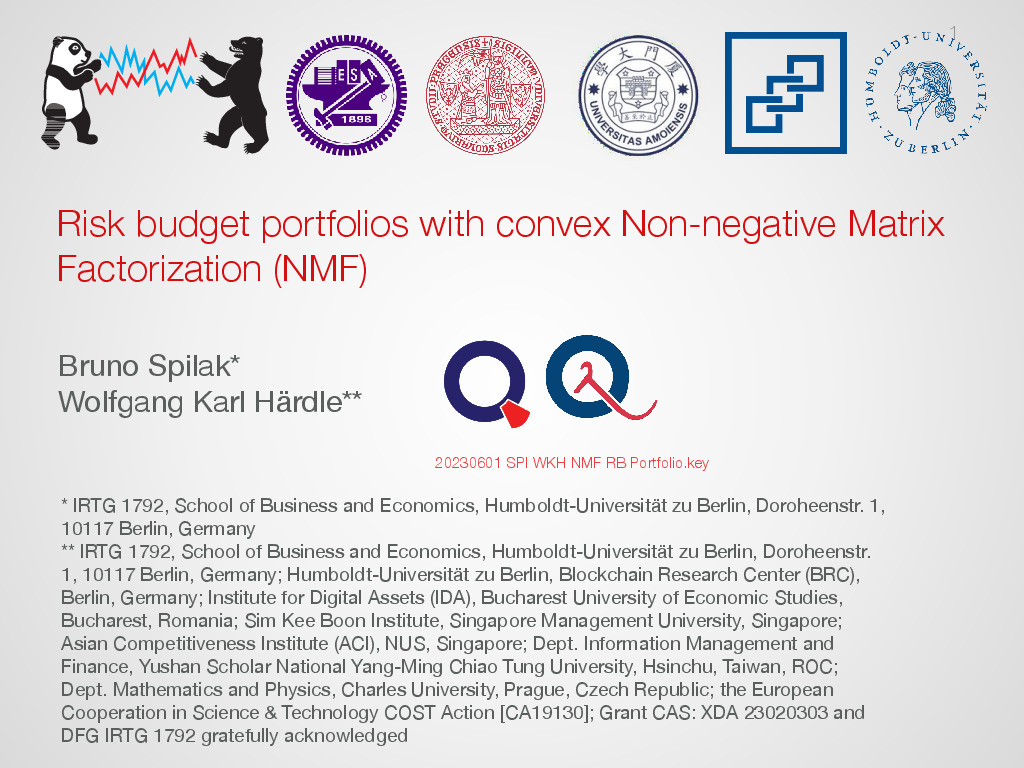Risk budget portfolios with convex Non-negative Matrix Factorization (NMF)
-
- 0 Rating
- 0 Reviews
- 4 Students Enrolled
Risk budget portfolios with convex Non-negative Matrix Factorization (NMF)
This is the courselet for the article "Risk budget portfolios with convex Non-negative Matrix Factorization"
-
- 0 Rating
- 0 Reviews
- 4 Students Enrolled
Courselet Content
Requirements
- Portfolio theory
General Overview
Description
We propose a portfolio allocation method based on risk factor budgeting using convex Nonnegative Matrix Factorization (NMF). Unlike classical factor analysis, PCA, or ICA, NMF ensures positive factor loadings to obtain interpretable long-only portfolios. As the NMF factors represent separate sources of risk, they have a quasi-diagonal correlation matrix, promoting diversified portfolio allocations. We evaluate our method in the context of volatility targeting on two long-only global portfolios of cryptocurrencies and traditional assets. Our method outperforms classical portfolio allocations regarding diversification and presents a better risk profile than hierarchical risk parity (HRP). We assess the robustness of our findings using Monte Carlo simulation.
Recommended for you
Meet the instructors !
Bruno Spilak is currently a research associate and PhD student at Humboldt University of Berlin with International Research Training Group IRTG1792 “High dimensional non stationary time series analysis”.
Along with a double masters degree in Statistics from Humboldt-Universität and ENSAI (a french Engineer Grande École), he has a rich background in research, scientific presentations and teaching.
Since 2018, he has co-taught graduate level courses related to smart data analysis, machine learning and mathematical statistics at his current institute and completed various research projects related to statistics, econometrics, machine learning and finance.
In parallel, Bruno has worked in multiple startups in Berlin as a Machine Learning scientist and co-built automated KYC products with deep computer vision tools.
Presently, he is working on the methodology to construct portfolios with non-parametric statistics tools such as neural networks.















